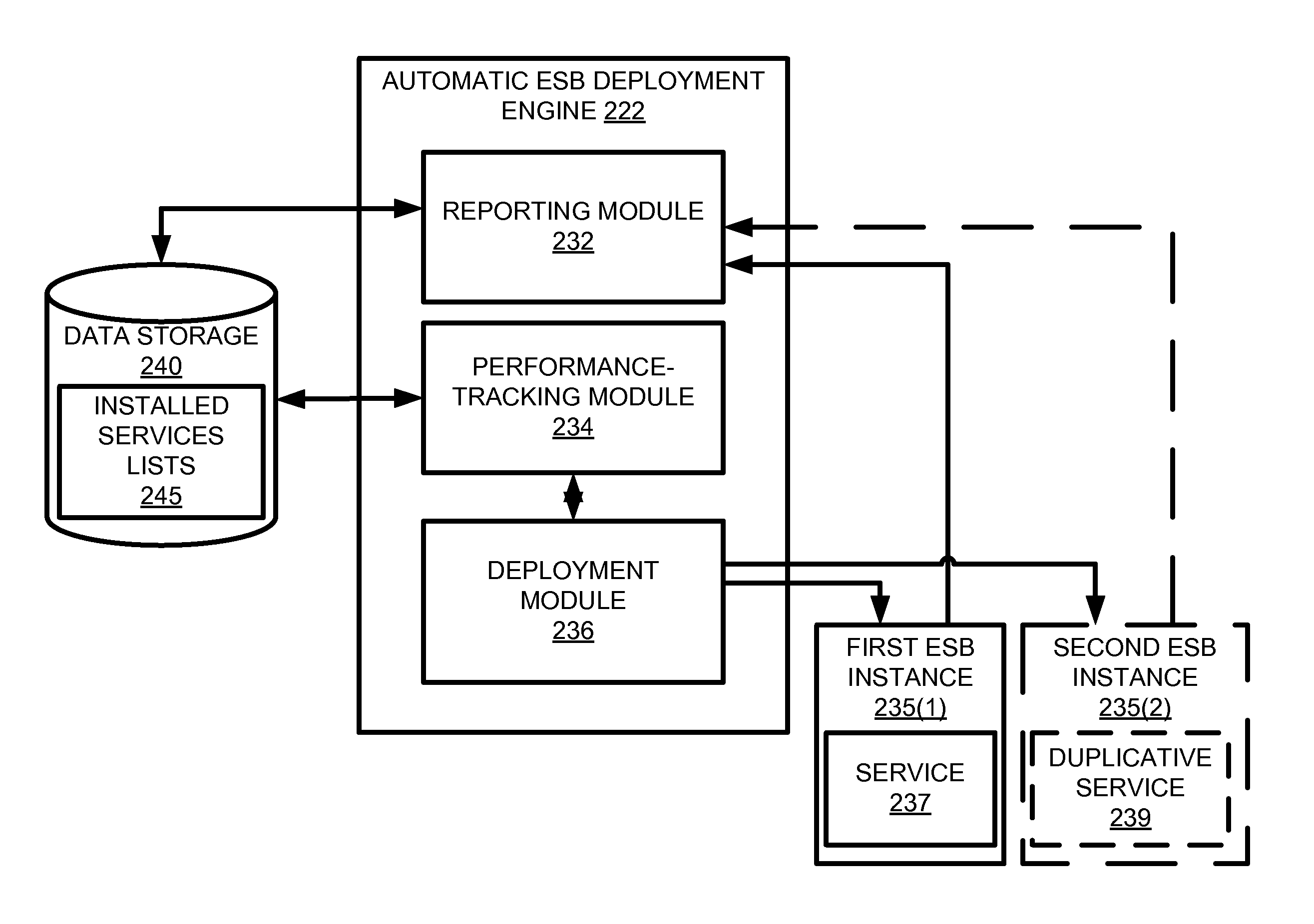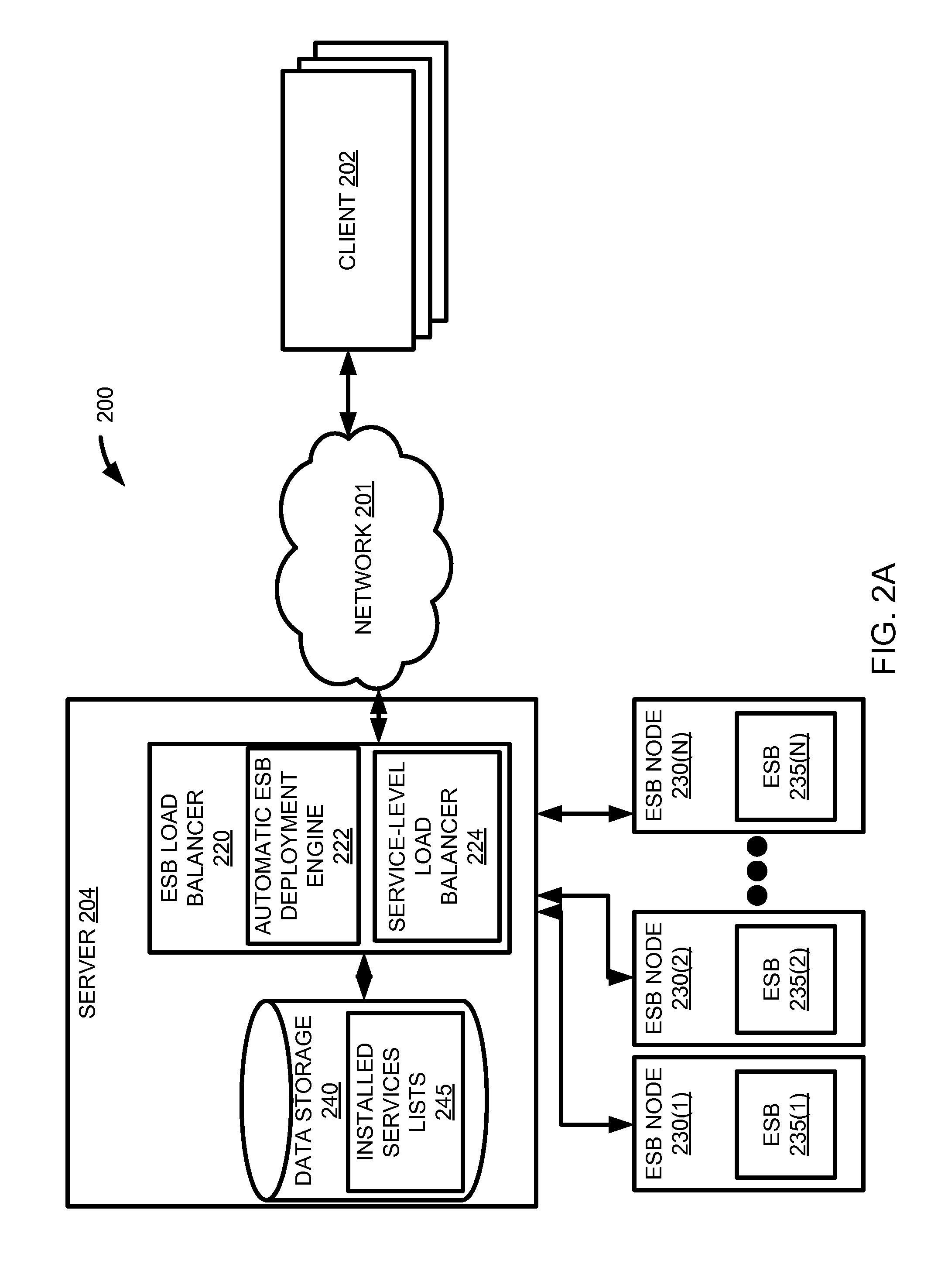Service-level enterprise service bus load balancing
a service level and enterprise technology, applied in the direction of program control, interprogram communication, multi-programming arrangements, etc., can solve problems such as unusable services deployed
- Summary
- Abstract
- Description
- Claims
- Application Information
AI Technical Summary
Problems solved by technology
Method used
Image
Examples
Embodiment Construction
A method and system for service-level ESB load balancing is described. In one embodiment, an ESB load balancer tracks service usage of multiple nodes, each hosting an ESB instance. In one embodiment, one of the ESB instances has multiple services and another instance has a set of one or more duplicative services of less than all of the services of the first ESB instance. In another embodiment, all ESB instances have the same duplicate services. The ESB load balancer receives an incoming message directed to a given type of service, determines which of the ESB instances has a least-used service of the given type, and forwards the incoming message to that ESB instance. In one embodiment, the ESB load balancer determines which of the nodes hosts a service of the given type and determines which of the determined nodes has the lowest resource utilization. The ESB load balancer may track the service usage by regularly receiving a report from each of the nodes, the report containing a list ...
PUM
 Login to View More
Login to View More Abstract
Description
Claims
Application Information
 Login to View More
Login to View More - R&D
- Intellectual Property
- Life Sciences
- Materials
- Tech Scout
- Unparalleled Data Quality
- Higher Quality Content
- 60% Fewer Hallucinations
Browse by: Latest US Patents, China's latest patents, Technical Efficacy Thesaurus, Application Domain, Technology Topic, Popular Technical Reports.
© 2025 PatSnap. All rights reserved.Legal|Privacy policy|Modern Slavery Act Transparency Statement|Sitemap|About US| Contact US: help@patsnap.com



